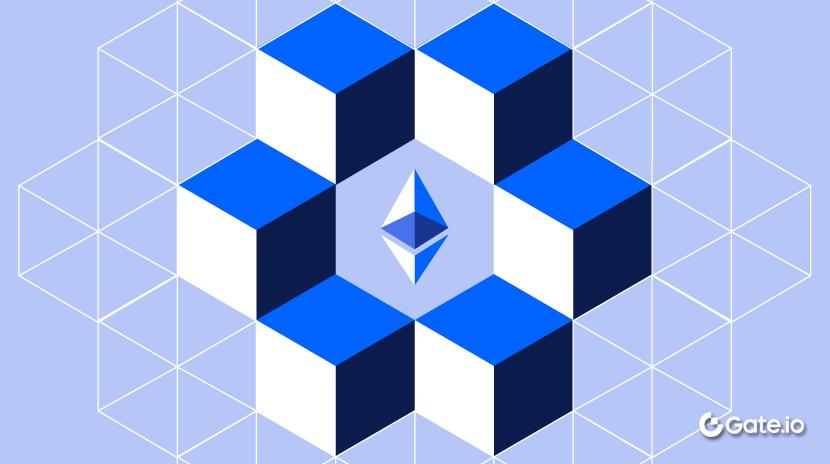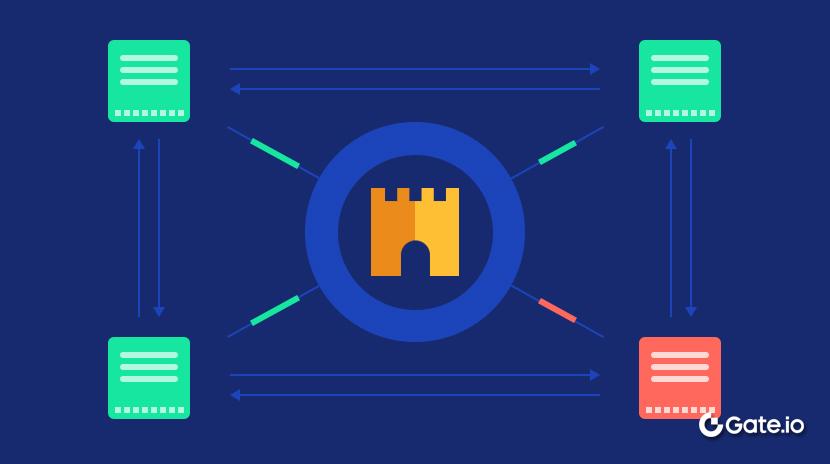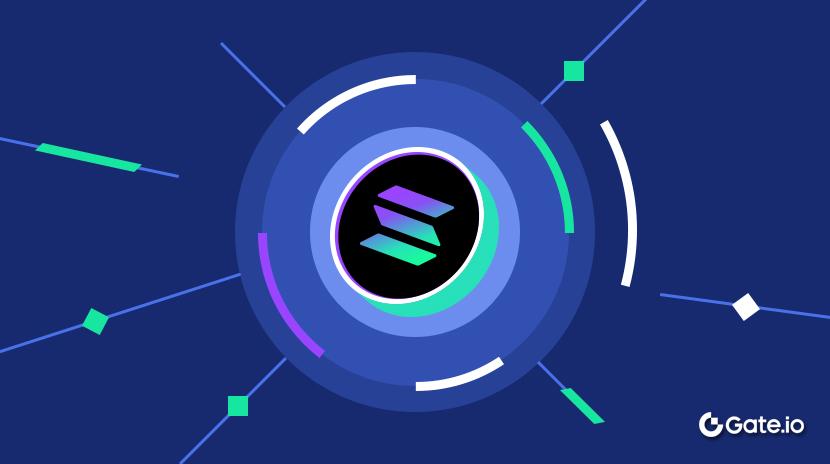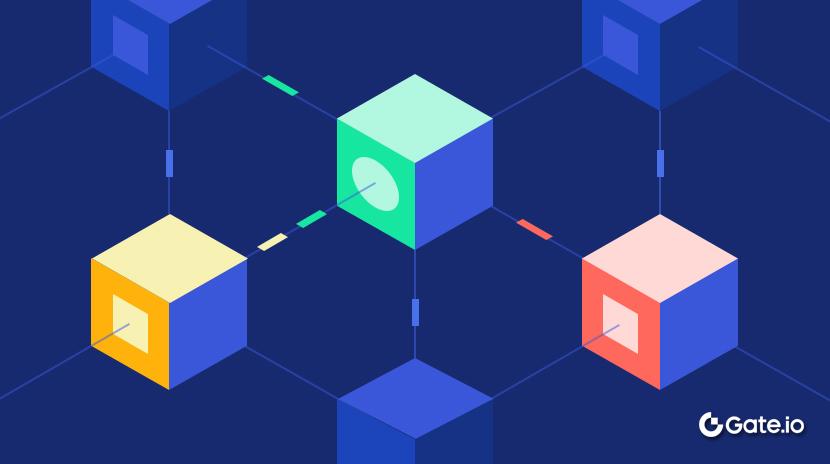Openmesh Networkとは何ですか?
Openmesh Networkは、セキュアで許可なくリアルタイムおよび過去のWeb3データへのアクセスを可能にする分散型データインフラストラクチャです。Web3は分散化を推進していますが、dAppsからバリデーターノードまでの多くのインフラストラクチャは、依然として中央集権化されたクラウドサービスに大きく依存しています。この依存関係は、検閲、規制の干渉、単一障害点を含む重大なリスクを導入し、分散化の精神を損ないます。耐障害性のある、検閲に強いシステムへの需要が高まる中、Web3の基本的な価値観と一致するインフラストラクチャが必要です。中央集権的な仲介者を排除し、コンピューティングやデータレイヤへのオープンアクセスを可能にすることで、Openmesh Networkは、Web3および従来のアプリケーションのために設計された完全分散型のクラウドおよびオラクルフレームワークでこれらの課題に対処しています。
Openmeshとは何ですか?
Openmesh Networkは2020年12月にAshton Hettiarachiによって設立され、インターネットのための分散型インフラストラクチャレイヤーを構築するというビジョンを持っています。最初はシドニーの小さなチームによって開発され、Openmeshは、特にほとんどのWeb3サービスが従来のクラウドプラットフォームに依存している中央集権化されたデータとインフラストラクチャに関する懸念の増大に対処するためのオープンソースイニシアチブとして始まりました。
2021年までに、Openmeshは既に分散型アーキテクチャの基盤を築き、ピアツーピアプロトコルを統合し、旗艦製品であるXnodeインフラストラクチャの初期コンポーネントを構築していました。Xnodesは、複数の地域で計算、ストレージ、およびデータタスクを管理する分散型マイクロサービスです。その早期展開は、中央サーバーや権限に依存せずに運用できるDePIN(分散型物理インフラストラクチャネットワーク)の実現を支援しました。
2022年、チームは技術的にも地理的にも拡大し、Xnode Studioを導入しました。このモジュラー開発環境を使用すると、ユーザーはレゴブロックを組み立てるのと同じくらい簡単に複雑なインフラ構築を行うことができます。このプラットフォームは、Skyscannerがフライトを提供する方法と同様に、世界中のベアメタルおよびクラウドプロバイダーにまたがるコンピューティングパワー、ストレージ、GPUなどのリソースを統合して効率的で構成可能なインフラプロビジョニングを数分で提供しています。
2023年と2024年を通じて、Openmeshはネットワークを拡大し続け、3億4500万以上のデータポイントと500以上のライブデータ製品に到達しました。同時に、一連のR&Dイニシアチブ、エコシステム助成金、戦略的コラボレーションを立ち上げました。プラットフォームのユーティリティは、Web2/Web3ホスティング、オラクルサービス、分散型データAPI、およびクラウドコンピュートレイヤーをサポートするよう拡大し、AWS、IPFS、BitTorrent、Chainlinkの要素を単一の合成フレームワークに統合しました。
2025年初頭、Openmeshは、Openmesh Expansion Program、Decentralized Cloud Initiative、およびOpenmesh Node Saleを含む一連の公開プログラムを立ち上げました。これらのプログラムは、より多くの参加者を獲得し、ネットワークをさらに分散化することを目的としています。現在、世界中に広がる26人以上の専門家チームを擁するOpenmeshは、インターネットインフラストラクチャの構築と運営方法を再定義するための、最も先進的なコミュニティ主導型取り組みの一つです。
Openmeshの動作原理はどのようになっていますか?アーキテクチャとインフラストラクチャ
Openmeshは、中央集権型のクラウドインフラストラクチャーを完全に分散型の代替手段に置き換えるモジュラーでピア・ツー・ピアのアーキテクチャーに構築されています。その設計の中心には、ユーザーがグローバルに分散したノードネットワーク上で分散アプリケーション、データシステム、およびコンピュートインフラストラクチャーを展開および管理できるXnodeテクノロジーがあります。これらのXノードはネットワークの分散型バックボーンとして機能し、相互運用可能な環境でコンピュート、ストレージ、およびネットワーキング機能を管理するマイクロサービスとして機能しています。
各Xnodeは、再現可能で検証可能なシステム状態を保証するNixOSに基づいたカスタムオペレーティングシステムであるXnodeOSを実行しています。このオペレーティングシステムは、Openmeshの確定性アーキテクチャの基盤となっており、各デプロイメントは異なるマシン間で同一であることが暗号的に検証されます。認証は完全にウォレットベースであり、セキュアで許可なしのインフラへのアクセスにはEthereum互換のウォレットが使用され、従来のメールやAPIキーログインが置き換えられています。
Xnode Studioインターフェースは、複雑な展開プロセスをワンクリック環境に抽象化し、開発者がシンプルなドラッグアンドドロップツールを使用して、分散ホスティング、ネットワーキング、RPCエンドポイント、分析エンジン、およびクエリレイヤーなどのモジュラーインフラストラクチャを構築できるようにします。システムは、Skyscannerのようなエンジンを使用して、ベアメタルおよびクラウドプロバイダー全体で最適なリソースを自動的に検索し、カスタム展開を組み立てます。
Openmeshのアーキテクチャは、Chainlinkのクロスチェーン相互運用性プロトコル(CCIP)とオラクルコンセンサスレイヤー(OCR 2.0)を統合しています。これにより、クロスチェーン通信、プログラマブルトークンの転送、オフチェーンデータへのアクセスが可能になります。これらの統合により、Openmeshは高度に合成可能であり、クロスチェーンDeFi、データマーケットプレイス、および信頼できるオラクルの構築に適しています。

ソース:docs.openmesh.network
Openmeshのデータは、主要なブロックチェーン、取引所、およびDeFiプラットフォームから収集され、その後、ノードクラスタによって管理される分散データドメインに暗号化されて安全に保存されます。これらのドメインは、地理的およびユースケースに分散された小さな信頼度最小化ユニットに中央集権化されたデータを分割し、地域間およびユースケース間での低遅延、冗長性、および障害耐性を確保します。このような伝統的なシステムとは異なり、Openmeshは、データの中心化された単位を使用し、中央集権化されたデータを地理的およびユースケースに分散された小さな信頼度の最小化ユニットに分割します。
すべてのコードは完全にオープンソースであり、コミュニティの貢献と継続的な改善を促進しています。プラットフォームはコミュニティDAOによって統治され、透明性、検閲への抵抗力、公正なインフラアクセスが強調されています。これは、Openmeshが自己修復、省エネ、スケーラブルなシステムに対するコミットメントにも及び、グローバルに強靭なWeb3インフラをサポートするために設計されています。
インフラストラクチャ
Openmeshのインフラストラクチャは、非常にスケーラブルで耐障害性があり、分散型のコンピューティングおよびデータサービスを提供するために設計された堅牢でモジュラーなフレームワークによって支えられています。その中心には、CometBFTを使用して検証ノード間で合意を維持するOpenmesh Coreという重要なソフトウェアレイヤーがあります。これは、Tendermintビザンチン容認(BFT)コンセンサスアルゴリズムの実装であり、ノードの約三分の一が故障しているか悪意を持っている環境でも、ブロックの作成、トランザクションの検証、および状態管理が安全に実行されることを保証します。合意エンジンはまた、ブロック提案者の選択、投票ラウンド(事前投票および事前コミット)、およびブロックの確定後の直ちの確定を処理します。
各検証ノードはデータ検証にも参加します。各ブロックで、検証者は特定のソース(DEX、取引所、Web3 APIなど)からデータを取得するようにランダムに割り当てられ、その後、データをIPFS経由でシードします。コンテンツ識別子(CID)が次にオンチェーン取引として提出され、検証可能なオフチェーンデータがプロトコルに直接埋め込まれます。これにより、Openmeshはインフラプロバイダーだけでなく、分散型データレイヤーとして機能することが可能となります。
このインフラストラクチャを補完するのが、DSMP、分散型サービスメッシュプロトコルです。DSMPにより、サービスメッシュワーカーと呼ばれるサービスが、ネットワークの分散コンピュートバックボーンであるXノードに展開されます。各Xノードはマイクロサービスを実行し、他のサービスとリソースを共有し、パブリックまたはプライベートなサービス利用を可能にします。libp2pを介したピアツーピアネットワーキング、Kademlia DHTを介したサービスの検出、リソースを考慮したスケジューリングによるタスクの委任が、DSMPのアーキテクチャの基盤を形成しています。これにより、サービスは自動的に検出可能で、スケーラブルで、強靭となります。
オブザーバビリティ・レイヤーは、すべてのサービスが透明に監視されていることを保証します。アップタイム、パフォーマンスメトリクス、エラーログ、およびサブスクリプション数は、Open Observability Protocolを介して収集および共有され、リアルタイムのサービスの健全性分析や問題の検出時の動的リソース再割り当てを可能にします。
正確性とセキュリティを確保するために、DSMPは複数のコンセンサスおよび検証モデルを採用しています。ステークの証拠(PoS)は説明責任を強制し、ノードはサービスの実行に参加するためにOpenトークンをステークする必要があり、悪意のある行動や誤動作に対して罰せられます。リソースの証明(PoR)は、コンピュートまたはストレージパワーを主張するXノードが、タスクを受け取る前にその主張を検証できることを保証します。一方、ビザンチン容認耐性(BFT)は、不正なノードが存在しても、正しいタスク結果について合意が得られることを保証します。
Openmeshのインセンティブシステムは、サービスプロバイダーがコンピューティング、ストレージ、可用性のためにOpenトークンを獲得するトークン駆動型経済をサポートしています。ノードは未使用のリソースをリースすることもでき、エコシステム全体の参加を促進しています。サービスは定期購読モデルを通じて収益化され、消費者は利用を確約し、プロバイダーは信頼性を証明するためにトークンをステーキングしています。
Together, Openmesh Core and DSMP build an intelligent, self-healing infrastructure that dynamically allocates resources, tolerates faults, and supports a wide range of decentralized applications—from DeFi to decentralized AI workloads.
Openmesh Core Products
Openmeshは、その分散型インフラストラクチャ、データ、および分析エコシステムを支える相互接続された製品を提供しています。各製品は独立して機能するよう設計されていますが、シームレスに統合され、開発者、組織、および企業がモジュラーでスケーラブル、かつ検閲に対抗できる基盤上に構築することを可能にしています。
Xノード
XnodeはOpenmeshのインフラストラクチャのバックボーンであり、分散ノードネットワーク全体で展開および構成システムとして動作します。NixOSベースのカスタムオペレーティングシステムであるXnodeOS上で動作する各Xnodeは、マイクロサービスとして機能し、ネットワークのデータ収集、検証、およびコンピューティングインフラストラクチャに貢献します。そのアーキテクチャは、再現性、アトミックな更新、および再起動なしの完全なシステムロールバック機能を保証し、高可用性システムに最適です。ドラッグ&ドロップのWebベースのプラットフォームであるXnode Studioを使用すると、ブロックチェーンノード、データ分析、または開発環境用に調整された事前構成済みのテンプレートを使用して、ユーザーはワンクリックでインフラストラクチャを展開できます。分散型仮想マシンであるXnode DVMへのアクセスは、NFTベースの認証によって管理され、従来のクラウド価値で3,500ドルに相当するコンピューティングリソースへの12か月間のアクセスが可能になります。このアプローチにより、インフラストラクチャのコストが大幅に削減され、Web3ネイティブアプリケーションのデプロイ速度が向上します。

ソース:openmesh litepaper
Openmesh Cloud
現在も積極的な開発中であるOpenmesh Cloudは、計算およびストレージリソースをピアツーピアのマーケットプレイスを通じて共有、貸し出し、消費できる分散型インフラストラクチャレイヤーを表しています。その中核にあるのは、CometBFTを使用したByzantine Fault Tolerant(BFT)コンセンサスを使用したOpenmesh Coreです。ノードは、ブロック作成、プリボートおよびプリコミットフェーズ、最終確定のための構造化された投票プロセスに参加します。これにより、最大三分の一の悪意のあるノードが存在する状況でも、状態の一貫性とネットワークセキュリティが確保されます。Cloudはトランザクションを検証し、IPFSベースのデータシーディングを実行し、即時確定を提供します。リソース割り当てはネットワーク全体で最適化され、不正行為に対してスラッシングを強制し、バリデータの説明責任を確保します。Openmesh Cloudは、従来のインフラストラクチャの代替として設計されており、データ集約型のWeb3操作に最適なスケーラブルで検閲に強い選択肢です。

ソース:openmesh litepaper
ピュティア
Pythiaは、Openmeshの分析インテリジェンスレイヤーです。Openmesh CloudとAPIに直接接続し、リアルタイムのデータ分析、可視化、インサイトを提供します。PostgreSQLコアとリアルタイムイベントストリームを介して動作し、SQLクエリ、自然言語プロンプト、およびカスタマイズ可能なチャートをサポートします。Web3ネイティブの認証はイーサリアムの署名によって実現され、セキュリティを維持しながらパスワードの必要性を排除します。このエンジンは、高度なキャッシュ (Redis 経由)、クエリ ルーティング、分散クエリ実行により、パフォーマンスとデータの鮮度のバランスを取ります。構造化データと非構造化データをサポートするPythiaにより、ユーザーはクロスチェーン取引、DeFiプロトコルのアクティビティ、およびオンチェーンメトリックを分析できます。そのアーキテクチャは、結果の共有、履歴データ管理、およびマルチチェーン統合をサポートしています。今後の機能強化には、クエリ結果の公開鍵暗号化、プロトコルカバレッジの拡大、コミュニティ主導の視覚化テンプレートなどがあります。

ソース:openmesh litepaper
Openmesh API
Openmesh APIは、ネットワークのデータへのGate.comwayとして機能し、ブロックチェーンや市場情報への安全で高スループットなアクセスを提供します。そのアーキテクチャは、WebSocketを介したリアルタイムのイベントブロードキャスト、IPFS/CDNを介した履歴データの取得、Pythiaの分析エンジンとの統合をサポートしています。その中核には、Universal Data Collector (UDC) があり、Boxoプロトコルを使用して受信した取引所とブロックチェーンデータをIPFSでバックアップされたコンテンツ識別子(CIDs)に分割します。処理パイプラインは、生のJSONおよびAvroデータをクエリ可能なParquetファイルとライブのPostgreSQLエントリに変換します。Kubernetesによって管理されるコンテナ化されたコネクタにより、APIは動的にスケーリングし、任意のソースからデータを取り込むことができます。カバレッジには、イーサリアムデータ、トークンの転送、DEXの取引量、およびトップのDeFiペアの市場指標が含まれます。これは、Openmeshのデータエコノミーの基盤となり、インフラストラクチャをユーザーに接続し、使命上重要な情報への信頼できる、合成可能なアクセスを実現します。
Openmeshの主な特長
Chainlink CCIP 統合
Openmeshは、Chainlinkのクロスチェーン相互運用性プロトコル(CCIP)およびデータフィードを、分散型クラウドインフラストラクチャに直接統合し、クロスチェーン機能を備えた分散型アプリケーションのシームレスな開発を可能にしています。この強力な組み合わせにより、開発者はチェーン間で通信し、トークンを転送し、単一の統合レイヤーを使用してプログラマブルな転送を実行するdAppsを構築できます。Openmeshの分散型コンピューティングおよびストレージ環境をChainlinkの14兆ドル以上のセキュアなオラクルインフラストラクチャと統合することで、このプラットフォームは開発者にスケーラブルで信頼性のあるWeb3サービスを構築するためのエンドツーエンドソリューションを提供します。リアルタイムのDeFiダッシュボードから分散型メディアやAIアプリケーションまで、CCIPは相互運用性を向上させつつ、セキュリティとコンポーザビリティを維持しています。この統合により、ビルダーはAWSやGCPのような中央集権的なプロバイダーに頼らずに、分散型クラウド内でネイティブにクロスチェーンアプリケーションを展開することができます。

ソース:docs.openmesh.network
オープンメッシュ拡張プログラム
Openmesh拡張プログラム(OEP)は、OpenmeshDAOによって立ち上げられたコミュニティ主導のイニシアチブであり、2024年第3四半期から2025年第4四半期までのプラットフォームのインフラ拡張とロードマップの実行を資金提供することを目的としています。この分散型アプローチは、現在80%以上のバリデーターノードとdAppsをサポートしているAWSやGoogle Cloudなどの中央集権的インフラへのWeb3の過度な依存を軽減することを目指しています。OEPを通じて、貢献者は、コミュニティがインフラを所有および管理する許可されたクラウドシステムの開発を直接支援することができます。ベンチャーキャピタルの資金を一切受けず、創業者自身が870万ドル以上を投資したOpenmeshは、草の根の成長とWeb3の理念にコミットしています。OEPへの参加のためのホワイトリスト登録は2025年2月28日まで可能です。

ソース:oep.openmesh.network
OpenR&D
OpenR&Dは、分散型チーム全体でスケーラブルなイノベーションを可能にする分散型R&Dプラットフォームです。これは、従来のオープンソースおよびDAOの協力の非効率を解消し、スマートコントラクトを介して管理される構造化された透明なタスクシステムを提供することによって行われます。開発者は、オンチェーンのロジックを介して自動的にタスクに申し込み、完了し、報酬を受け取ることができます。一方、紛争解決システムやコミュニティガバナンスによって公平さが確保されます。このプラットフォームは、モジュラーなDAO参加をサポートし、貢献者が確認されたメンバーとなり、ロードマップの決定に影響を与えることを可能にします。OpenR&Dは、開発者が自分の作業を所有し、構造化された機会にアクセスし、エコシステムの成長に有意義な貢献をすることを可能にします。このプラットフォームはスケーラブルに構築されており、分散型の作業環境で最小限の摩擦で貢献者が参加し、協力し、提供することを可能にします。

openmesh.network/Openrnd
Openmesh DAO
Openmeshは、検証済みの貢献者にガバナンス権限を与えるDAO構造の下で運営されています。民間企業や中央集権的な基金ではなく、DAOによってインフラのアップグレードや貢献者のオンボーディングなどの重要な意思決定が透明に行われます。このプロセスには、低リスクの行動(例:貢献者の追加)に向けた楽観的な提案や、リボケーションなどの重要な意思決定に対する投票ベースのシステムが特徴として取り入れられています。NFTベースの貢献者アクセスは分散型の資格証明を強制し、財務管理、ロードマップの優先事項、およびガバナンス規則はすべてDAOのコントロール下にあります。このガバナンスシステムはWeb3の価値観と一致し、Openmeshがコミュニティ主導、許可なく、中央集権的な拘束から保護され、長期的なプロジェクトの弾力性と包括性が向上することを保証しています。
Opencircle
OpencircleはOpenmeshのコミュニティ学習およびオンボーディングエコシステムです。 Opencircle Academyを介してOpenR&DとOpenmeshインフラストラクチャへの入り口を提供します。-対話型コース、実世界のプロジェクト、およびDAOに対応した学習パスが特徴の教育ポータルです。 Opencircleは開発者、研究者、学習者をつなぎ、Openmeshエコシステムへの貢献の機会を提供します。 この取り組みを通じて、参加者は、基本的なブロックチェーンの概念と高度なDeFi、クラウドインフラストラクチャ、およびデータサイエンスのトピックを教えるキュレーションされたカリキュラムを進むことで、学習者から貢献者に成長することができます。 Opencircleはコミュニティのネットワーキング、キャリア形成、およびエコシステムの成長も促進し-これにより、Web3ビルダーの次世代のオンボーディングに不可欠なリソースとして位置付けられます。
オープンR&D(開発者体験)
OpenR&Dは、透明なプロジェクト管理とトークン化された報酬分配を通じて、開発者体験を変革するOpenmeshプラットフォームの基盤です。これにより、分散型の調整レイヤーがエンジニアリングワークフローに導入され、DAOやコアチームが中央集権的なボトルネックなしでプロジェクトを管理できるようになります。開発者は、スマートコントラクトによって管理されるタスクベースの貢献システムに参加し、エンジニアリングコラボレーションのためのスケーラブルで公正なエコシステムを作成できます。このシステムは、オープンソースやDAOの協力モデルの主要な欠点に対処しながら、開発者の説明責任を確保し、分散化を維持します。OpenR&Dは、エンジニアが自分の貢献を所有することで、将来に備えたインフラストラクチャを構築するための信頼性のある、許可されていないフレームワークを作成します。
Openmesh トークノミクス
Openmeshのトークノミクスは、ネットワークセキュリティ、開発、エコシステムの成長、およびガバナンスをバランスよく促進するよう設計されています。総トークン供給量は、コア、ネットワーク、セキュリティ&ノードオペレーター(36%)、研究開発(32%)、エコシステム開発(20%)、および資金調達と準備金(12%)という4つの主要カテゴリに分散されています。
トークンの36%という大部分は、インフラストラクチャとノードの運用に割り当てられており、Openmeshネットワークの安全性と拡張性を確保しています。これには、ノードオペレーター報酬の20%、初期ノードバリデータープログラム参加者の8%、関連ボーナスの2%、検証済みリソースプロバイダーの2%、およびデータプロバイダーとステーキング報酬向けの小規模なシェアが含まれています。これらの割り当ては、堅牢な技術インフラの維持とネットワーク参加者へのインセンティブ付与の重要性を強調しています。
さらに32%は、20%はコアチーム、アドバイザー、サポーター、8%はOpenR&D認定貢献者インセンティブ、バウンティ、助成金、トレーニング、将来の実績のためのリザーブを含む、継続的な研究開発を支援しています。このセグメントは、Openmeshの革新と分散型エンジニアリングへの取り組みを維持しています。
エコシステムの成長は20%を占め、DCI(Decentralized Cloud Initiative)、コンテンツ作成、パートナーシップ、ユーザーオンボーディングなどのコミュニティ主導のイニシアチブに割り当てられています。これはOpenmeshが草の根拡大とコミュニティ主導の開発を信じていることを反映しています。
最後に、12%は、将来の資金調達のための5%、予備金のための3%、流動性および運営経費のための小さな割合を含む、資金調達および運営予備金に確保されています。

ソース:openmesh litepaper
Openmeshは、デュアルトークン構造を導入しました。sOPENは、TGE前に使用されるERC-20トークンで、OPENは、主要なガバナンスおよびユーティリティトークンです。両方のトークンは1:1の交換率を持っています。スポンサーと早期の支援者は、Xnodesとして引き換え可能なクラウドクレジットを受け取ります。彼らにはガバナンストークンが付与される場合があり、これにより、重要な決定に貢献したり、ネットワークオペレーターや検証済みの貢献者などの役割を果たすことができます。このレイヤードインセンティブモデルにより、Openmeshの分散型クラウドインフラストラクチャは、コミュニティによって管理され、長期間にわたって構築されることが保証されます。
Openmeshの使用事例
Openmeshは、開発者、組織、およびデータプロバイダーが中央集権的な依存関係なしに構築およびスケーリングすることを可能にします。そのユニークなアーキテクチャは、Web3、DeFi、AI、および伝統的なWeb2セクター全般のさまざまなユースケースに適しています。
- ブロックチェーンノードやWeb3アプリケーションのための分散ホスティング:OpenmeshのXnodeインフラストラクチャと分散クラウド機能を利用することで、開発者はAWSやGCPのような中央集権型プロバイダーに頼らずに、検証者ノード、RPCエンドポイント、スマートコントラクトフロントエンドを展開することができます。これにより、検閲やダウンタイムのリスクが著しく低減され、プロジェクトは主権を保持し完全に分散化されることが可能となります。Web3アプリケーションは、Xnode Studioを介して展開および管理されたインフラストラクチャにより連続した稼働時間を維持することができます。
- DeFiプロトコル向けのクロスチェーンデータとアナリティクス:Openmeshは、オンチェーンおよびオフチェーンソースからのリアルタイムおよび過去のデータ集約をサポートし、Openmesh APIを介して処理し、Pythiaを使用して分析します。これは、複数のブロックチェーンを横断するDeFiプロジェクト向けに分散型オラクル、取引ダッシュボード、価格フィード、流動性アナリティクスを構築するのに最適です。Chainlink CCIPとの統合により、安全なクロスチェーンデータとトークンの送金をさらに可能にします。
- AIおよび研究協力のための許可されていないインフラストラクチャ:OpenR&DおよびOpenmesh Cloudを介して、研究チーム、データサイエンティスト、およびAI開発者は、透明なDAOガバナンスと検証可能な貢献を備えた分散計算およびストレージリソースにオンデマンドでアクセスできます。 Openmeshは、AIモデルの構築、シミュレーションの実行、および中央集権化された研究プラットフォームの制約なしに分散型サービスを展開するための協力環境を提供しています。
Openmeshのニュース
2025年3月21日、公式Xチャンネルを通じて発表されたとおり、OpenmeshはXnode Studio V5を発表し、分散型インフラストラクチャ管理の大幅な強化を行います。このアップデートには、直接ノード間通信、コンテナ化されたアプリケーション、アプリごとのバックアップ、ファイルおよびログへのアクセス、役割ベースの権限、そして完全なNixOS構成制御が含まれます。制限されたログインやパフォーマンスの向上のためのRustベースのバックエンドなど、セキュリティの強化も行われており、Xnode Studio V5は、中央集権的な制御から解放された、堅牢でユーザー所有のクラウドインフラストラクチャを提供するOpenmeshの使命を反映しています。このマイルストーンにより、開発者は中央集権的な制御から解放された、高性能なインフラストラクチャを完全に運用する力をさらに強化されます。
関連記事

ETHを賭ける方法は?



ソラナとは何ですか?

GateToken(GT)とは


